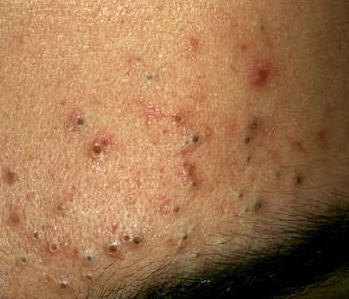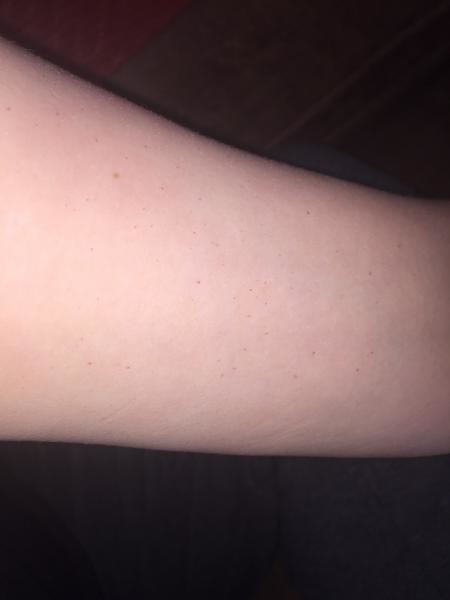

^ Kishimoto, Saburo Hideya Takenaka Hideya Takenaka Hideya Takenaka Hirokazu Yasuno (2000).: CS1 maint: DOI inactive as of July 2022 ( link) "Carbonic anhydrase is abundant in fenestrated capillaries of cherry hemangioma". ^ Eichhorn, M Jungkunz, W Wörl, J Marsch, WC (1994).
LITTLE PINPOINT RED DOTS ON SKIN SKIN
Weedon's Skin Pathology Essentials (2nd ed.). Andrews' Diseases of the Skin: Clinical Dermatology (13th ed.). Dermatology for the Primary Care Provider. (12)01056-0/fulltext Epidemiology Ĭherry angiomas occur in all races, ethnic backgrounds, and sexes. Įruptive cherry hemangiomatosis, has been rarely reported as a heralding sign of multicentric Castleman disease (MCD), multiple myeloma and other lymphoproliferative diseases. They are harmless, having no relation to cancer at all. In most patients, the number and size of cherry angiomas increases with advancing age. įuture treatment based on a locally acting inhibitor of MEK1 and Cyclin E1 could possibly be an option. More recently pulsed dye laser or intense pulsed light (IPL) treatment has also been used. If they are cosmetically unappealing or are subject to bleeding angiomas may be removed by electrocautery, a process of destroying the tissue by use of a small probe with an electric current running through it. These lesions generally do not require treatment. The differential diagnosis includes nodular basal cell carcinoma, amelanotic melanoma, and angiokeratoma. Examination with a dermatoscope shows characteristic red, purple, or blue-black lagoons. The diagnosis is based on the clinical appearance of the lesions. Ī significant increase in the density of mast cells has been seen in cherry hemangiomas compared with normal skin. These specific missense mutations found in hemangiomas are also associated with port-wine stains and uveal melanoma.Ĭhemicals and compounds that have been seen to cause cherry angiomas are mustard gas, 2-butoxyethanol, bromides, and cyclosporine. They also found that targeting MEK1 and cyclin E1 with small interfering RNA decreased the number of endothelial cells.Ī study published in 2019 identified that somatic mutations in GNAQ and GNA11 genes are present in many cherry angiomas. By inhibiting mir-424 in normal endothelial cells they could observe the same increased protein expression of MEK1 and cyclin E1 which, important for the development of senile hemangioma, induced cell proliferation of the endothelial cells. The study found that the level of microRNA 424 is significantly reduced in senile hemangiomas compared to normal skin resulting in increased protein expression of MEK1 and cyclin E1. This regulatory nucleic acid was lower in tissue samples of hemangiomas, and the growth factors were elevated, which suggests that the elevated growth factors may cause hemangiomas. One study published in 2010 found that a regulatory nucleic acid suppresses protein growth factors that cause vascular growth. The underlying cause for the development of cherry angiomas is not understood.Ĭherry angioma may occur through two different mechanisms: angiogenesis (the formation of new blood vessels from pre-existing vessels), and vasculogenesis (the formation of totally new vessels, which usually occurs during embryonic and fetal development).

They can also occur in an aggressive eruptive manner in any age. Cause Ĭherry angiomas appear spontaneously in many people in middle age but can also, less commonly, occur in young people. One study found that the majority of capillaries in cherry hemangiomas are fenestrated and stain for carbonic anhydrase activity. Because the blood vessels comprising an angioma are so close to the skin's surface, cherry angiomas may bleed profusely if they are injured. Multiple adjoining angiomas form a polypoid angioma. As they grow larger, they tend to expand in thickness, and may take on the raised and rounded shape of a dome. However, they then usually grow to about one or two millimeters across, and sometimes to a centimeter or more in diameter. When they first develop, they may be only a tenth of a millimeter in diameter and almost flat, appearing as small red dots. They range in colour from bright red to purple. Cherry angiomas are made up of clusters of capillaries at the surface of the skin, forming a small round dome (" papule"), which may be flat topped.


 0 kommentar(er)
0 kommentar(er)
